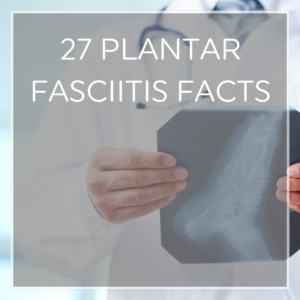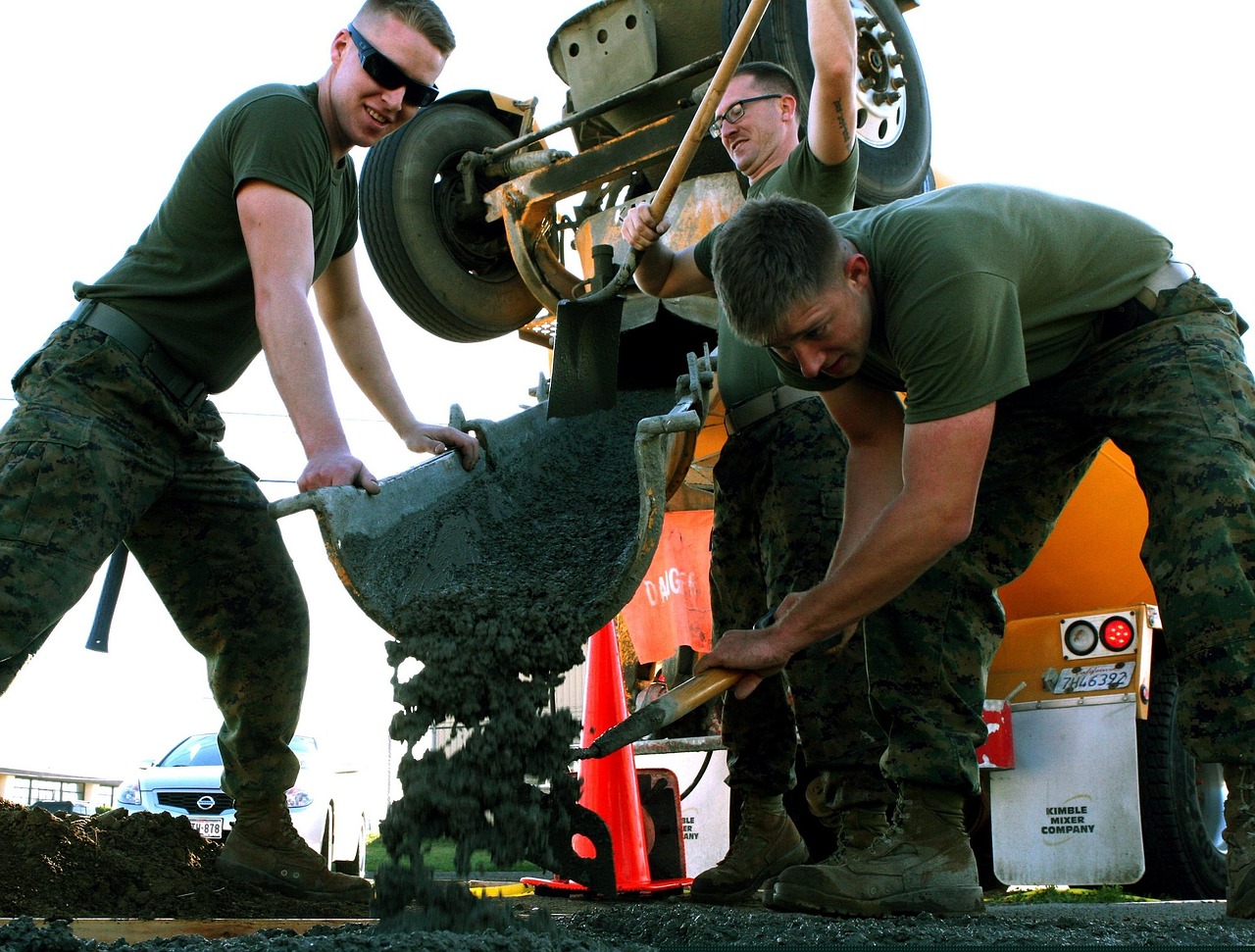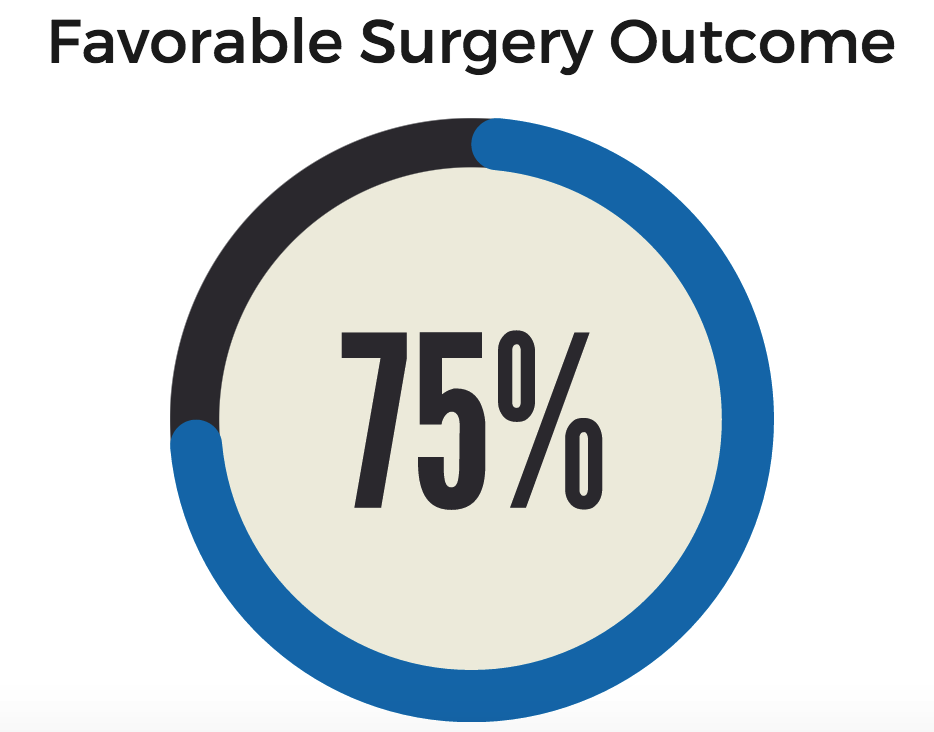 If you suffer from Plantar Fasciitis, you might not think there’s much fun to be had when it comes from this painful condition.
If you suffer from Plantar Fasciitis, you might not think there’s much fun to be had when it comes from this painful condition.
We couldn’t agree more–but we still hope these interesting, surprising facts about Plantar Fasciitis make you smile, or at the very least give you a great addition to the conversation next time someone asks how your heels are feeling!
1. Problems with dorsiflexion
People with Plantar Fasciitis also typically have trouble with something known as dorsiflexion. That’s the movement in which the foot is brought toward the shin.
2. One in ten will struggle with plantar fasciitis
Just about 10% of the population will suffer from Plantar Fasciitis at some point during their lifetime. That’s a lot of people!
3. Orthotic inserts with Fascia Bar Technology are twice as effective as Dr. Scholls.
Not all orthotics are created equal! Fascia Bar technology is the difference between orthotic shoe inserts that specifically target plantar fasciitis, and inserts that simply provide cushioning – a clinical study even confirmed it!
Click here to get patented and proven Fascia-Bar inserts!
4. Age is a factor in plantar fasciitis
The age group most likely to be struck by Plantar Fasciitis is those between 40-60 years of age. In part, that’s because the tissue in the foot starts losing elasticity as we age!
5. Weight can also be a factor in heel pain!
In fact, obesity is a factor in 70% of plantar fasciitis cases. In some cases, gaining weight quickly is a given, and even healthy (for example, pregnancy). However, according to a paper published by Dr. Rosenbaum in Medical Clinics of North America in other situations it’s important, if at all possible, to maintain a healthy weight in order to keep healthy feet.
6. Plantar fasciitis often heals without medical intervention
An incredible 90% of cases involving Plantar Fasciitis are self-limiting. Meaning, with 6 months of conservative treatment (including stretching, icing, and the use of orthotic inserts) the condition will greatly improve or be fully resolved!
7. In fact, stretching alone can improve or eliminate heel pain!
In a study published in the Journal of Bone and Joint Surgery, heel pain was either eliminated or much improved at eight weeks in 52% of patients who were treated with an exercise program to stretch the plantar fascia. Stretching to relieve symptoms of plantar fasciitis doesn’t work immediately–but for many people it does work in the long-term. Incorporate stretching into your daily routine for best results.
8. Plantar fasciitis misdiagnosis is common
Plantar Fasciitis isn’t always the culprit when it comes to heel and foot pain. If your pain isn’t going away, or if insoles and stretching make it worse, you might not have plantar fasciitis. Ligament tears and plantar fibromas are two of the leading conditions that masquerade as plantar fasciitis, or if you’re experiencing a lot of foot pain during the night, you may have Tarsal Tunnel Syndrome.
9. The plantar fascia ligament absorbs an astounding amount of force

It’s incredible to think about, but during an average day, the total impact your feet absorb is equal to the weight borne by a fully loaded cement truck! It’s no surprise that this strain can wreak havoc on the plantar fascia if your arch isn’t properly supported!
10. The feet contain a quarter of all the bones in your body!
Here’s a fun fact about plantar fasciitis: A full quarter of the bones in your body are located in your feet–52 to be exact! When those bones are out of alignment, havoc can ensue, and plantar fasciitis is likely!
11. Women are more likely to experience plantar fasciitis
Did you know that the average woman walks 3 miles more every day than the average man? That might be why women are four times as likely to experience foot problems than men–or it could be the fact that 9 out of 10 women regularly wear shoes that are too small! Time to ditch the stilettos and grab a pair of orthotics, ladies!
12. One in five has high arches – which contributes to plantar fasciitis
Just about 20 percent of the population in the United States has high arches–a leading contributor to Plantar Fasciitis if not properly supported!
13. Sometimes supportive shoes are all it takes to remedy plantar fasciitis
In one study, 14% of patients noticed an improvement in their plantar fasciitis symptoms simply by wearing more supportive footwear. Footwear is one of the most important aspects of supporting your heel and arch! Good footwear means better impact absorption, better cushioning, and less heel movement.
14. Heel Spurs are found in about 50% of plantar fasciitis cases
Contrary to common belief, heel spurs are caused by plantar fasciitis–not the other way around! Heel spurs develop in response to trauma of the plantar fascia, which can ultimately cause a great deal of pain when walking. Treating plantar fasciitis early is the key to avoiding heel spurs.
15. One in four has flat feet – also a factor in plantar fasciitis
On the other end of the spectrum, 60 million Americans (about 25% of the population in the United States) have flat feet–another major red flag for Plantar Fasciitis. Neither flat feet nor high arches absorb impact as well as balanced arches, and cause extra strain and trauma to the fascia.
16. Custom orthotics cost 10x as much Heel Seats or more
Custom orthotics cost between $200-$800 per pair–as compared to the cost of Heel Seats at $24.95 per pair. Many physicians agree that custom orthotics are overprescribed and very expensive.
17. Custom orthotics are ineffective for plantar fasciitis pain anyway!
A breakthrough study found that after three months, custom orthoses only improved pain 11% as compared to placebo orthotics. Going custom can be incredibly expensive–and might not be worth the extra money!
18. Night splints improve plantar fasciitis pain for up to 80% of people
Several studies have shown that use of night splints results in improvement for 80% of patients. Additional studies find that night splints are especially helpful for individuals whose symptoms have been present for more than 12 months. Night splints are a terrific option for speeding healing, especially if you aren’t seeing results as quickly as you hoped. They can particularly help with morning pain, one of the hallmarks of plantar fasciitis.
19. Combining orthotics and night splints may provide even better results
In one study, the combination of foot orthosis and an adjustable dorsiflexion night splint resulted in a 47% decrease in pain. If just one solution for your plantar fasciitis pain isn’t working, try combining treatments with orthotics and a night splint.
20. Runners are more likely to have plantar fasciitis
You’ve probably heard about the connection between running and Plantar Fasciitis. Well, here’s why! The impact your feet absorb when you run can be as much as four times your bodyweight!
In fact, Plantar fasciitis has been reported to account for about 10% of all injuries that occur in connection with running. Wearing proper footwear, supporting your feet with orthotics, and resting as needed is key.
21. Sometimes all it takes is standing still to develop heel pain

Ever wondered why standing all day for work can feel so much more tiring than walking, even though you haven’t gone anywhere? It’s not all in your head! Standing in place is much more conducive to the development of plantar fasciitis, since strain is being placed on a few muscles over a long period of time, rather than spread over numerous muscles. Standing for long periods of time can put you on the fast-track to developing Plantar Fasciitis.
22. Plantar fasciitis information is underserved
Interestingly enough, there’s more websites out there dedicated to foot fetishes than to plantar fasciitis!
23. Professional athletes and celebrities have plantar fasciitis too
Celebrities’ feet are just as susceptible to Plantar Fasciitis as yours are! In some cases more so, when it comes to professional athletes, whose feet take quite the beating. A-list celebrities who have suffered from Plantar Fasciitis include Paris Hilton, Angelina Jolie, Albert Pujols, Pau Gasol, Peyton Manning, Tim Duncan, and Shaquille O’Neal.
24. Plantar fasciitis is cause for one million doctor visits per year
According to the Centers for Disease Control and Prevention’s National Center for Health Statistics, the pain from plantar fasciitis drives a huge number of people to the doctor’s office annually. That’s no small matter! For many of these cases, symptoms could be resolved with at-home treatments like stretching, icing, and orthotic inserts.
25. Surgery IS the answer for a small number of people

Favorable outcomes were reported in more than 75% of patients who underwent surgery in one study. While surgery should be used as a last resort because of its expense, risks, and the down time involved, it’s a very effective last resort if needed!
26. The cost of plantar fasciitis surgery can reach $10,000 or more
Not only is surgery incredibly expensive, it also involves a lot of physical therapy and down time–and should be a last resort.
27. Plantar fasciitis is expensive!
The yearly cost to treat Plantar Fasciitis in the United States is estimated at $284 million dollars–a lot of it spent on unnecessary surgeries and medical interventions!
So now you know a few lesser-known facts about Plantar Fasciitis!
But remember, the most important thing you should know when it comes to dealing with foot pain is how to find relief. And as you learned above, 90% of cases can be treated without invasive, expensive–and painful–treatments.
Give cost-effective, proven Fascia Bar technology a try today, or read 20 more foot facts you probably don’t know.





Using your blue inserts and some use of the splint had helped, but what really seemed to help me is the use of honey bees stinging my heels.I did use the blue inserts for a very long while after using stings. Now if I would get a hint of a problem ,
I visit the bees. JIM KAGIN
Hi Jim
Thanks for sharing this treatment idea with us! It is not something we have discussed on our site before, but we will do some research into it.Glad you found something that works for you 🙂
Injections for weeks, custom orthotics, stretches, supplements, essential oils, night splints, anti inflammatory meds, taping, better quality shoes… Now trying rest..Nothing is helping!! I am 45, a stay at home Mom of 3. Home-school teacher, homesteader. Not overweight really (5 ft 10 in and 155 lb) though could stand to lose a few pounds. I walked (until the pain hit) 3 miles each day. Now, I feel hopelessly house-bound!! This is awful!!!!! I have cut carbs, to make sure I dont gain weight while I am “layed up”!! Doc says that my fasciitis is accompanied by a large spur. No mention of surgery yet. Maybe it will go away soon?? Prayers to all you sufferers out there. I know it is terrible!!!! I bought a second-hand stationary bike, and am trying to stay as active as possible, but off my feet. Tough!!
It sounds like you’re doing just about everything right, Erika! The only thing you can do at this point is keep in close communication with your doctor and follow their advice. Feel free to join our Facebook group for support and advice from other PF sufferers : https://www.facebook.com/groups/HeelPainSupportCommunity/
This sounds just like me,i am doing the over night splints and believe it or not, i found a pair of birkenstocks and they are the only shoe, i am able to wear/walk in without pain right now ,because the archs are amazing,but i had 2 nurse friends recommend that I get a walking boot until it heals ,hope this helps
Walking boot will give you other painful issues. Tight hamstrings and calves. I recommend foot massages. Thats the only thing that helps me on a regular basis. My therapist stretches my legs first then my feet and then deep tissue massage. Wonderful.
ECSW shockwave therapy, molded orthotics and good footwear are the only things that helped me
I feel your pain. I have been going through it now since March now. Started seeing a doctor 2 months ago. It seems to be slowly getting there. But I clean homes 5 days a week so it makes it hard.
Stretch out your calves with a rolling pin. I also saw chiropractor who did the Grayson technique on my calves and ankles. I’ve been pain free after suffering for a year.
My SIL and her daughter struggled with PF as do I. She recommended Brooks running shoes. Relief in 3days! Worth a try.
Brooks caused my PF according to my doctor. I’ve been struggling with this for almost a year.
How are you now? Im is the same situation hoping there’s relief someday
Pues yo estoy con sesiones de acupuntura…y me está doliendo menos..después de meses…
I recently developed plantar fasciitis. I had gained a lot of weight, I had walked barefoot all day so it was no surprise that my foot pain started. I had it in both feet and could barely walk around without severe pain . I was 40 years old and 5 kids at home. It literally crippled me. I did a lot of research to cure it. It took me six months but eventually I did cure it.
Go off all foods that cause inflammation such as gluten and dairy.
Where Crocs shoes. They are hands-down the most comfortable shoe ever and most affordable. Never ever walk barefoot.
Rub comfrey on your feet every night and every morning.
Stretch your feet every time you have been sitting or laying down for a long period of time.
By doing these 4 things I cured my plantars fasciitis in 6 months.
I hope this can help anybody out there who is suffering.
Hi,
Can empathize with u. May god heal your problem and u recover without surgery. How u feeling now?
I live in Britain I have felt that we do not know enough, my doctor told me it was the way my body was put together I wore my boot for 7 months even cooking Christmas dinner and entertaining. I am know wearing Skecher shoes, this has helped. I can know go out in trainers. I am seeing my consultant who wants to take a tendon out of instep another from the side then smash my heel and rebuild it.I am so glad I have read all the info and practically healed my heel . Thank you for your info.
I have had two different podiatrists tell me that Sketchers were crap. I wear Hokas. They are trainers that have a rocker base like the old Sketchers but you can choose neutral or pronator. Plush or firm. They are worth a look. I have also gotten Dansko Pro and Naot sandals. The problem I have is what feels good one day may not feel good the next week so I switch things up. Best of luck to you. This sucks😏
OMG… I love Hokas. I love the ahri 1 with the 5 mm heel drop. It was like pain one second and absolutely not paint the next second!
For two years I tried everything suggested. Nothing made the pain go away. Then I read about Hoka One . I bought a pair and wore them non stop for 2 weeks. Pain began going away. It took about 4 months but pain did completely go away. I still wear Hokas everyday allday.
I’ve had pf now for a month. When I’m resting its seems not to bad. I work 12hr shifts 6 in a row. Don’t know what to do the pain is so bad. Popping painkillers like sweets. Can’t afford to take time off work as I live on my own
I am going on over three years of pain. It feels like two nail in my heel. I have tried all inserts, orthotics, acupuncture, physical therapy, ice, stretching, the boot for a month, the only thing that gives some relief is cortisone injections for three to four months. I have spent thousands of dollars. I am a 5th degree black belt and I can only train using the heel wrap you make. Contemplating surgery.
So glad our products allow you to continue doing what you love. It might be time to bring up surgery with your podiatrist or orthopedist and see if it’s the right option. Best of luck ❤️
No podía caminar. Tacones de 5 a 7 cm me han ayudado
Tina I sympathise with you because I do the same thing. I walked with a jell pad on my heal all the time even when I got up to go to bathroom in the middle of the night. It took about a year and a half but the pain gradually got better and went away
I have done all the recommended treatments. Stretching, sleep boots, orthotics, cortisone shots, surgery, PT. I am currently on the last thing I can think of which is acupuncture with stretches and “Pain Free by Pete Egoscue”. If this doesn’t work, I don’t know what I will do. I wish I had paid attention to what my body was trying to tell me 10 years ago but I loved running and aerobics and ignored it. I think I am finally better with limitations. Here’s to faith rest and acupuncture.
to Denise Christensen — Surgery didn’t help you?! I am so sorry for all you are going through. Not being able to be as active as you’d like is very depressing. I pray you stay encouraged. And I do hope the acupuncture cures you!!! Don’t give up!
I am in middle of round 3 of plantar fasciitis. It has been an ongoing problem for me for 6 years. This time though my mental state is better. I know what to expect. It’s not as strong but definitely still there in that spot. Seeing a doctor and doing what he says. I will say the mental part is the hardest. Quitting the behavior has been the only thing that has ever worked. For me that was changing jobs. It wasn’t the 30 min bike ride that was hurting me but the hours at work on feet. So I am looking for jobs that require less standing on feet. Love reading these, I guess I’m still looking for that magic bullet that will work.
I suffered for two years with plantar fasciitis and finally went to a chiropractor who suggested the “stripping” technique. You can view it on YouTube. It worked right away. Stripping breaks down the scar tissue that has built up over time. I was also fitted with “Foot Leveler” orthotics. I never walk around barefoot inside my house. I purchased Vionic slippers to wear and they are a life saver. I also stretch both feet every morning before getting out of bed. Hope this info helps someone who hasn’t had relief. Thx.
Many thanks for sharing this info. It’s very useful.
I have tried everything except surgery with not much relief
The night splint has worked wonders for me.
Things that make mine worse: going barefoot, wearing unsupportive shoes, shoes with memory foam (my orthopedist says memory foam should not be in shoes at all because it causes extreme foot instability. The cushioning feels nice at first, but within 15 minutes I have pain in my feet and legs, and if I keep wearing them,the pain increases and the next day I am in agony.
Night splints and topical analgesic have helped me. It took a bit of getting used to but have helped. Don’t get the prescription splints they are very expensive and I’m told most insurances don’t pay for them. I ordered mine from amazon for 30$. Investing in better work shoes also helped. I wear Clark’s. My ortho doc told me that the best treatment is to combine multiple treatments until you find what works. I am also doing stretches and am looking for some inserts. I also wear the compression short socks with the toes out . You can buy these for like 10$. I wear these on and off they the day as they are very tight and make my toes tingle if I keep them on too long. Also, take care of both feet as I have injured my opposite foot somehow compensating for the PF.
I have pF for about 2 years it has become worse resentley also l have pttd so l have to put up with that to. I would like to use the heal cushions but they don’t work well with my orthotics. I’m interested in all your tips l just can’t get out much with this horrible condition .